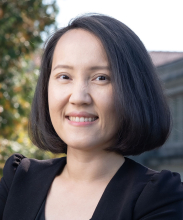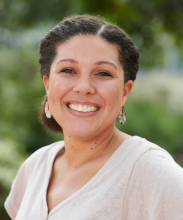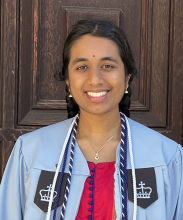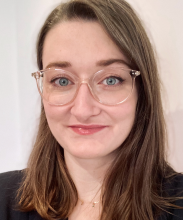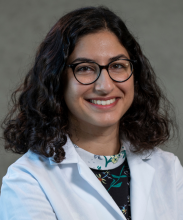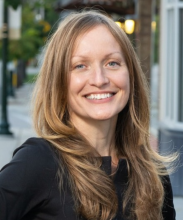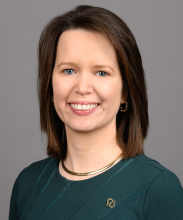
Recorded live from the Wisconsin ADRC’s Alzheimer’s Disease & Related Dementias Research Day, Dr. Nathaniel Chin discusses the importance of mentorship and the future of neuroscience and Alzheimer’s disease research with the Alzheimer’s Association International Conference® (AAIC) Neuroscience Next 'One to Watch' award recipients and the event’s organizers.
Guests: Barbara Bendlin, PhD, director, UW-Madison Neuroscience and Public Policy Program, leader, Research Education Component (REC), Wisconsin Alzheimer’s Disease Research Center; Claire Sexton, DPhil, senior director of scientific programs and outreach, Alzheimer’s Association; Nadia Dehghani, BS, co-chair, Neuroscience Next Scientific Program Committee; Claire André, PhD, postdoctoral fellow, Center for Advanced Research in Sleep Medicine, Université de Montréal; Chinmayi Balusu, founder, CEO, Simply Neuroscience; Kacie Deters, PhD, assistant professor, University of California Los Angeles; Kao Lee Yang, MPA/PhD candidate in the Neuroscience and Public Policy Program, University of Wisconsin–Madison
Show Notes
Learn more about Dr. Barbara Bendlin at her bio on our website.
Learn more about Dr. Claire Sexton at her bio on the Alzheimer’s Association website.
Learn more about Nadia Dehghani at her bio on the Van Andel Institute website.
Learn more about Dr. Claire André, Chinmayi Balusu, Dr. Kacie Deters, and Kao Lee Yang at the press release, “Up-And-Coming Neuroscientists and Mentors Honored at Alzheimer’s Association International Conference Neuroscience Next,” on the Alzheimer’s Association website.
Learn more about Chinmayi Balusu’s company, Simply Neuroscience, on their website.
Learn more about AAIC Neuroscience Next at the Alzheimer’s Association website.
Learn more about Alzheimer’s Disease & Related Dementias Research Day on the Wisconsin Alzheimer’s Disease Research Center’s website.
Connect with us
Find transcripts and more at our website.
Email Dementia Matters: dementiamatters@medicine.wisc.edu
Follow us on Facebook and Twitter.
Subscribe to the Wisconsin Alzheimer’s Disease Research Center’s e-newsletter.
Transcript
Intro: I'm Dr. Nathaniel Chin, and you're listening to Dementia Matters, a podcast about Alzheimer's disease. Dementia Matters is a production of the Wisconsin Alzheimer's Disease Research Center. Our goal is to educate listeners on the latest news in Alzheimer's disease research and caregiver strategies. Thanks for joining us.
Dr. Nathaniel Chin: Welcome back to Dementia Matters. If you're a regular listener of our podcast, you know that one of the most common questions I ask experts is, “what do you hope for for the future of Alzheimer's disease research?” While I pose this question to experts on the show, the future of Alzheimer's disease research and all neuroscience-related research lies with the students, postdocs, and early career investigators who are leading the way in scientific thought, collaboration, communication, and or outreach. For today's episode, I'm recording on-site at the Wisconsin ADRC's Alzheimer's Disease-Related Dementias Research Day, an annual event promoting collaboration and scientific thought among faculty, students, and researchers from a wide range of disciplines at the University of Wisconsin-Madison. This year's Research Day is also the kickoff event for the Alzheimer's Association's International Conference's Neuroscience Next conference, a virtual event showcasing the work of students and early career investigators, where they'll present the One to Watch awards for to the next generation of leaders in neuroscience. I'm joined today by Dr. Barbara Bendlin, professor in the Division of Geriatrics and Gerontology at UW-Madison, director of the UW-Madison Neuroscience and Public Policy program, and leader of the Research Education component at the Wisconsin ADRC. I'm also joined by Dr. Claire Sexton, senior director for scientific programs and outreach at the Alzheimer's Association, as well as Nadia Dehghani, PhD candidate in Guerreiro-Brás Lab, and she's going to correct me for that, Van Andel Institute, Grand Rapids, Michigan. She's also the co-chair of the AAIC Neuroscience Next. Nadia will be defending her PhD next month, so we're very excited to have her on site and in person. Her research focus happens to be genetic characterization of neurodegenerative diseases in understudied populations. In addition to these great interviews, we also have the four recipients of this year's One to Watch Award. Thank you all for joining us. Barb, I'm going to start with you. Within the ADRC, you lead the REC Core. What is the REC Core? And why is it an important aspect of AD research?
Dr. Barbara Bendlin: First of all, Nate, thanks for having us. And the research education components are actually a facet of all Alzheimer's disease research centers across the country. And the goal of the RECs are to support the training of the next generation of researchers in aging and dementia. So our goal is to bring more people into research and care and expose people to the possibilities of careers in aging and dementia. And not just to recruit the next generation, but support them in their studies and their learning. And this is tremendously important because without this exposure, people might not consider careers in aging and dementia. In fact, I myself didn't until I learned about it. But once you start to learn more about the fields, the needs, the science, and particularly the people and the families affected by dementia, then people really are drawn into the mission of working in aging and dementia.
Chin: So Barb, how important is mentorship and research? And how does one know a good mentor from a not so good one?
Bendlin: So it's very important to have a good mentor. A mentor provides guidance and support as you navigate the research process. And when you first get into it, it has its own language and rules, so mentors can help you navigate that process. They can also help you identify a meaningful question and conduct rigorous science. They also can use their expertise to help you avoid mistakes. And importantly, they can also connect you with others in the field and help you build your professional network. So with regard to what distinguishes good mentors from not so good mentors. Well. There's a lot of factors that can go into choosing a mentor. But I think at the end of the day, a good mentor is someone who believes in you and believes in your capabilities. So they should be experienced and wise and patient and willing to share their knowledge. But just in reflecting on the mentors in my own life, it's really been those people who believed in me and my capabilities, even when I had my own doubts.
Chin: So everyone needs a mentor.
Bendlin: Yes, absolutely.
Chin: So I want you to imagine that an early career investigator is listening to this podcast. What one tip, and only one tip, but what one tip do you have for them?
Bendlin: Okay, I kind of have two. But the first is to work with people you enjoy, and then also on problems that you believe in. Because when you're working in science, there can be ups and downs. There can definitely be challenges: grants that aren't funded, papers that aren't accepted, other just difficulties, right? So I think as long as you're working with people that can support you, and you're also working on problems that you really believe in and believe are important for people affected by dementia, then I think that keeps you grounded and will carry you through in your work.
Chin: Thank you, Barb. Claire, thank you for being here today. I'm wondering if you can tell us more about Neuroscience Next.
Dr. Claire Sexton: Yeah. Neuroscience Next is a scientific conference that really has early career researchers at its very heart. So not only just as attendees, but also as presenters, as moderators and as organizers. So over half of our organizing committee are graduate students or early postdocs. So it's really their ideas which are kind of moving this conference forward in the direction it's taken. This year is a different year. This is the third time that we're doing it. The first two years were in the pandemic. We wanted to create opportunities for researchers to still present their work. And it was fully virtual. But this year, it's a hybrid hub conference. So we're coming live from Madison, Wisconsin today with the awards. And then later in the week, we'll be live from Philadelphia; we'll be live from Brazil; we'll be live from London. So we'll be bringing attendees together both locally and also globally around the world, which is tremendously exciting, I think.
Chin: And the Alzheimer's Association certainly is excellent at doing the hybrid model based on the amazing attendance at AAIC. And for those listeners, Claire, we've already done a podcast on July 5 of 2022, where you introduce AAIC, and we'll plan on doing that again this upcoming year. I do wonder, how do you see the role of the Alzheimer's Association in mentorship and growing early career researchers?
Dr. Claire Sexton: It's something that we at the association are really dedicated to, and it's foremost in our minds. So in the introduction to Neuroscience Next, you'll have heard our chief science officer, Maria Carrillo, talking about how we want to be alongside researchers, supporting them, you know, throughout all of the firsts in their careers. So if this is somebody's first virtual conference that they're attending, we want to be there with them for that. We want them then to come to AAIC for their first in-person conference, to be presenting their first poster with us and then progressing through. So then it's their first time chairing, their first oral presentation, their first plenary with us. So that we can be here alongside and supporting researchers in the way that they want to be supported really right from the first stages and then throughout their careers.
Chin: So you envision this is going to be an ongoing program for the Alzheimer's Association?
Dr. Claire Sexton: Yes, So then we're looking at through our convening. So with Neuroscience Next supporting early career researchers, also through ISTAART and our professional interest areas, we have peers, which is again, supporting early career researchers year round. So this is something that through our grant programs as well, our convenings. Something that is really a key emphasis for us at the association.
Chin: Nadia, thank you for being here and congrats on defending.
Nadia Dehghani: Thank you.
Chin: My question for you is what excites you about Neuroscience Next and the researchers you've already met through the program?
Dehghani: Sure. Well, thank you for the invitation to join you on this podcast. I'm thrilled to be here today and to have the opportunity to represent the truly fantastic scientific program committee who have designed this diverse four day conference. This is an international body of neuroscience students, postdocs, and seasoned experts, and together we've engaged over 2300 attendees and counting. So I'm so excited to see how the conference will progress these next few days and so excited to see how it will grow in the future as well. We just heard from Claire about all the plans that have taken place these last few years and what we have in store to look forward to as well. I've personally benefited a lot from this engagement as well, and I'm looking forward to continuing the traditions.
Chin: Now to introduce the future leaders of neuroscience in this year's One to Watch recipients, Dr. Claire André, Ms. Chinmayi Balusu, Dr. Kacie Deters, and Ms. Kao Lee Yang. So Claire, I'm going to start with you. You are a neuroscientist with a research focus on the role of sleep in Alzheimer's disease. You completed your PhD in psychology in 2019, and during your doctoral studies, you explored the connections between sleep and Alzheimer's disease biomarkers in older adults, utilizing neuroimaging techniques and polysomnography. These are sleep studies for those listening. Currently as a postdoctoral fellow at the Center for Advanced Research in Sleep Medicine in Montreal, Canada, where Claire is studying the associations between REM sleep, Alzheimer's disease risk factors, and the integrity of the cholinergic system. So Claire, my first question for you is can you talk to us about your research in studying this relationship between sleep and Alzheimer's disease, and what role REM sleep may play?
Dr. Claire André: Yeah, thank you very much for the invitation. And I'm really glad to be here and to receive this award. I'm really fascinated about the question of sleep and what role it may have in AD pathophysiology. I think that we undervalue sleep a lot and that sleep is really a pillar of health. So it has multiple consequences and implications. And we know that patients with dementia have a lot of sleep problems. So a lot of symptoms concerning sleep are arising in these patients. And more recent research suggests also that sleep may be a risk factor for the development of the disease. So it's really a bidirectional relationship. And I'm really fascinated by the association between sleep and AD pathology. I've started my PhD working on sleep apnea, and it occurs a lot during REM sleep. And we have shown that people with sleep apnea, even when they have no cognitive deficits, have more amyloid deposition in the brain. and in posterior cortical regions. It has a lot of clinical implications. Now, I'm moving a bit to the study of REM sleep. The reason why we are interested in REM sleep actually, is because it is regulated in part by subcortical nuclei in the brainstem and also cholinergic neurons located in the basal forebrain. And these nuclei are affected very, very early in the course of the disease by tau pathology. So it is really likely that we are going to see disturbances in REM sleep happen. And it has a lot of implications because REM sleep has a role in memory consolidation and deregulation of emotions. So we're going to see problems related to this arise as well.
Chin: So this could be an earlier indicator, an earlier change. And for our listeners, they know that I value sleep greatly and that I think it is a foundational pillar. So this next question for you is both professional and personal. Since your research focuses on sleep and REM, can you talk a bit about how bad night's sleep or perhaps regularly not sleeping well can impact the brain? And do these impacts get worse with someone with Alzheimer's disease or a different form of dementia?
André: Yeah, this is a really fascinating question because a good night of sleep is all about getting sufficient amount, so quantity and quality on a regular schedule. So when you have poor sleep, when you don't really sleep enough or when you have fragmented sleep and when it happens repeatedly, so when it becomes chronic, you are going to have a lot of consequences. And the brain is going to suffer from those consequences. For example, a lot of studies have shown that you have problems in brain structure when you have poor sleep, like brain atrophy, and also problems in brain function, so disruptions in brain metabolism or connectivity, a lot of problems in brain structure and functions. Besides that, it has been shown that sleep has a role in eliminating toxic waste from the brain. It means that when you have poor sleep, it is going to enhance the buildup of pathological proteins in the brain, including amyloid, which is relevant to dementia, of course. A part of that, you also have changes like greater neuroinflammation, for example. This is what we see in people with sleep apnea. So a lot of problems, and it's going to have behavioral and cognitive consequences. If we come back to REM sleep, we know that REM sleep is implicated in the memory consolidation and the regulation of emotions. So if REM sleep is disrupted, you are going to have mood changes. disrupted memory and memory deficits.
Chin: I can see you're very passionate about sleep. Thank you for that and for being here. I'm going to move on to you, Ms. Chinmayi Balusu. You are in your final year of a Master's of Public Health pursuing Neuroepidemiology at Columbia University. Your current research projects focus on stroke, brain injury, cross-cultural neuroethics, and youth science communication. Outside of academia, you are the founder and CEO of Simply Neuroscience, a global nonprofit organization expanding early and interdisciplinary access to neuroscience for students. For your community impact efforts, you have been recognized as a global teen leader and Everyday Young Heroe. Thank you for being here. And if you could start by telling us about your research and in particular, how your many projects, the stroke, traumatic brain injury, cross-cultural neuroethics, youth science communication, relate among each other.
Chinmayi Balusu: Thanks again for having us. To be honest, what I love about neuroscience is that you can wear so many hats at the same time and not really feel that they're very distinct from one another. So Indeed, epidemiology ethics, they seem like they're on very far ends of the spectrum. But I love that in a day, you can go from studying a research project about, let's say, a cohort of individuals with Alzheimer's disease and think about different principles of autonomy and the individual concerns that they may face as a cultural community. A lot of intersecting factors, and I think especially being involved in the science, but then being able to step outside of the science and be on the periphery and look in a bit is really interesting. Having that interdisciplinary approach, it has made me feel a lot more connected to my work and seeing its true impact, because I think in a lot of clinical and science research, we often get caught up in the day-to-day. We get caught up on how our data is looking and things like these. So it's a very, I think, humanistic perspective to our work.
Chin: Given your work in brain injury and youth science communication, I have a lighthearted but still serious question for you. What would you say to an adolescent interested in playing soccer or football for those who are living outside of the U.S.?
Balusu: I can speak to this from personal experience because I was a soccer player myself and I think the biggest thing is it's still absolutely important to get involved in physical activity and stay active, but just also important to keep these kind of safeguards in the back of your head. And I think where a lot of youth science communication comes in is that students are really great about looking out for one another. I remember being a part of my team, and if I saw something that was really concerning out on the field, I would go up to my teammate and be like, “Hey, are you all doing OK?” “Do you need any support?” So I think instead of just approaching it as, “Oh, concussion protocols”, or these really scary words, or “I'm going to get in trouble with my coach,” or these fears, I think it's just really important to make sure that youth are involved so they can take care of their brains, especially as they're growing, and make sure that they can keep an eye out for their teammates as well.
Chin: Very polished and politically correct answer. Thank you. So Dr. Kacie Deters, thank you for being here. You are an assistant professor at UCLA in the Department of Integrative Biology and Physiology. Now your lab focuses on markers, and that includes genetic, neuroimaging, neuropsychological assessments, and social environmental factors for cognitive decline and Alzheimer's disease and related dementias in older adults, particularly from the black community. Now, you are also the Black in Neuro seminar series program lead and passionate about JEDI efforts. And I'm going to start by asking you to kind of go over the acronym JEDI, as well as then tell us about your work studying the many different types of markers as they relate to cognitive decline, brain disease, and in the Black community.
Dr. Kacie Deters: Excellent. Yeah, thank you so much again for having me here today. I'm very happy to be on this podcast. I echo what everyone said. It's been a pleasure so far hearing what everyone's had to say. So yeah, so the acronym JEDI, you know, a lot of people focus on the DEI or EDI, which is diversity, equity and inclusion. But incorporating justice into our work is just as important because if we don't make these policy changes, it's going to be very hard to actually implement long-term structural changes into diversity, equity and inclusion. So JEDI is justice, equity, diversity and inclusion.
Chin: Regarding your research then, specifically looking at all these markers, the black community, Alzheimer's disease and related dementia, and even how you're weaving Jedi philosophy and values into that.
Deters: Yeah, so that's a big part of my work, you know, two reasons why I chose to become faculty. We're not only to give back to the Black community, but also to give back to minoritized scientists trainees. There are a lot of different struggles that we go through during our training. So I really wanted to create a safe space in my lab for these people to really be themselves without some of the current political climate that exists in academia. My work, as you stated, does focus on looking at different markers such as genetics, neuroimaging. I'm really, really interested in social factors like structural racism and discrimination, and I would like to take this time as well to give a shout out to the person who actually nominated me for this AAIC Neuroscience Next Award, Dr. Paris Adkins-Jackson or Dr. AJ, who's at Columbia University as well. She is an expert in structural racism and has been really helping me in my lab to incorporate this very important measure. When we talk about how has JEDI incorporated into my work, a lot of the social inequalities, including health, dementia, really stems from past social policies, structural policies that have been in place. Really focusing on markers like structural racism, discrimination, and how that impacts cognition and dementia in the black communities is really, really critical.
Chin: One of the things I find amazing is that the concept or the reality of racism, it seems to me very difficult to actually quantify and measure. Once you do, you can really see how it pervades everything that we're doing, including science and neuroscience and working in the lab. What is a tool that you use when you study this?
Deters: This is actually a relatively new field for me, and typically it is a quantitative questionnaire assessment that's given to participants in the study. So the one that I've been focusing on right now is called the Everyday Discrimination Scale. It's about nine, maybe ten questions now, they vary between the two scales, about different experiences of discrimination. So for example, like being followed around a store. And there is a four to six point Likert scale. So your response to each question on the everyday discrimination scale can vary between never, every day, every week and so forth and so forth. So using this scale has been used in previous studies to look at how discrimination is associated with specific markers like neuroimaging markers. There's a really great paper that came out earlier this year from Dr. Laura Zahodne and Dr. Adam Brickman that looked at discrimination and how it relates to brain aging through structural MRI measures like cortical atrophy and also white matter hyperintensities, which is a measure of vascular injury. And we know that Black individuals have a higher risk for vascular disease. Showing how a social factor such as discrimination might have implications later in life and biological processes that increase a group such as Black individuals for having these markers of Alzheimer's disease, dementia, is really critical that we need to explore further.
Chin: That's incredible work. For the listeners who are participants, we thank them for filling out these many pages of questionnaires because clearly it matters and we can see these strong correlations.
Deters: Absolutely. The participants really drive this research and without them, we would literally not be here. I would not be a scientist without their help. So yes, thank you to them as well.
Chin: Okay, I'm going to move on to you, Ms. Kao Lee Yang. I know, Kao Lee, you and I have been on the podcast together before. For those who are interested, April 27, 2022, we talked about disaggregating racial data and the importance of ethnicity. You are a third-year PhD MPA student in the neuroscience and public policy program at the University of Wisconsin-Madison. Your focus in research is on using imaging and fluid-based biomarkers in the early detection of Alzheimer's disease. Additionally, you launched Hmong in the biological sciences. So that's the at Hmong in BioSci on Twitter, a professional networking group intended to bring together scientists and trainees who identify as Hmong. And you're leading a community-based collaborative project to develop culturally and linguistically appropriate materials about dementia for Hmong and Cambodian elderly. So can you tell us about your research projects and what you're finding in the early detection of Alzheimer's disease space?
Kao Lee Yang: Well, first, thank you, Nate, for having me back here. It's such an honor to be here among all of the awardees, these wonderful strong women that I am inspired by. I do want to say that in our lab, we use imaging and fluid biomarkers, to discover or to understand what's happening in their brain when people are either harboring Alzheimer's disease pathology and or maybe at risk for it. And the reason why this is important is because if we're able to identify if people are harboring Alzheimer's pathology, we may be able to intervene in some way. And I really want to give a shout out to my fantastic mentor, who is fostering and sustaining such a rich learning environment, which has enabled me to learn all of these skills. What I wanted to say is that my research in the past has focused on myelin-related changes in the brain, because the brain is a complex environment full of different types of cells that do different things. To most people, when they think about Alzheimer's, they might think about amyloid or tau, but really amyloid and tau is interacting with the whole complex cellular environment. In my work previously looking at myelin, I do see that myelin is associated and there are changes that happen when people have these pathologies. Recently, my research has also changed to focus on how we can then detect these brain-related changes in the periphery, so specifically blood biomarkers. Does that reflect brain-related changes and what can we do? I am in my third year and I'm exploring these very cool and interesting questions related to biomarkers. So in a couple of years, I'll be able to tell you more about what I find related to blood biomarkers.
Chin: Thank you, Kao Lee. Now, what I find interesting is that language is clearly very important in parts of your work as you are creating important information for people from Cambodia and Laos. It makes me wonder, though, you're also working on Twitter and creating a great networking space in Twitter, which is a different type of language, I suppose. And so what surprised you in your endeavor to utilize Twitter to bring Hmong scientists and trainees together?
Yang: Yeah, so first of all, social media can be a very powerful tool for connection. It doesn't always work that way, but I think that when used correctly, that can be the outcome. I went on Twitter because I was really seeking among identifying scientists and trainees just to expand my network and because in my training, I have not come across these other trainees and or scientists. And what I found is that there are very few of us. Currently, I am one of three among identifying trainees in neuroscience that I know of, and I only found the other two trainees because I was on Twitter. If there are more, please reach out to me, but I think this is an indication of an area that we can improve in the sciences. There are individuals from either sub-ethnic groups or from other minoritized groups that are less known. One of the purposes of being on Twitter is that I want to show that we are here and so that you can also come here. We can practice inclusion that way by showing visibility. So that's one of the things that I've learned is that there's room to grow.
Chin: Thank you, Kao Lee. To end today's podcast, I do have a couple of questions that I'm hoping all four of you can answer. You don't have to answer each question, but if something strikes you, please speak up. So my two questions are going to be how important were mentors in your development? And what do you think Alzheimer's disease research will look like 10 years from now? And of that, what excites you the most? If anyone wants to start.
Deters: Nate, that's a really, really great question, and I really wanted to take the opportunity to answer this because I honestly would not be here if it wasn't for the mentors I have today. And that is a very true statement. I struggled a lot through the program. I'm actually not a great student when it comes to tests. And so I failed a lot along the way. Obviously, I have a job as a professor and researcher now, so I could do the research. But coming up was just not very easy. If it wasn't for the mentors in my life that actually saw the potential in me and gave me the opportunities to flourish as a researcher, I would not be here at all. I do want to recognize them. My PhD mentor, Dr. Andrew Saykin at Indiana University. Also, I had a co-mentor there, another prodigy of his, but Dr. Shana Richter. After my PhD, I had a mentor at Stanford University who was my postdoc mentor, Dr. Beth Mormino. She actually hired me to do tauPET. And when I told her about my interest in ethnic and racial disparities research, she allowed me to pursue that. And if she did not allow me to pursue what I was fully interested in, I, again, would not be in the space. She connected me with a wonderful mentor, who's a leader in this research space, Dr. Lisa Barnes at Rush University. And I also got connected to Dr. Jennifer Manly, who's also at Columbia University. These are two wonderful, powerful Black women in this space, and I had never had a Black mentor at that time, and now I have two. I just thrived so beautifully and wonderfully. I felt empowered from having them in my life. Now I try very hard to connect other black scientists with each other. Twitter, social media has been amazing at this. Also being a part of the wonderful group, Black in Neuro, which really encompasses anybody interested in neuroscience from high school until retired. So it's been a real privilege to not only have received the mentorship I have, but now I'm in a place to really provide the mentorship for my expertise. That was a really long answer, but I'm just very passionate about mentorship and I just think it's just so amazing. But I think that the way that especially the younger generation has really banded together as well to provide these safer spaces, I think that the future of neuroscience over the next 10 years is just going to be even brighter, better. I can't imagine the things that are going to come from it, just from all of the additional support that we now have thanks to social media and platforms provided by the World Wide Web.
Balusu: Kacie, that was really amazing and I'd love to touch on kind of the younger generation note that you ended on because a lot of my work with Simply Neuroscience is based on interdisciplinary and helping students really understand what it means to be interdisciplinary beyond just a buzzword. That sounds really cool and really great to say out loud. I think part of that is having mentors who can introduce you to things that you had not really thought about, especially outside of academia, let's put it directly. Science is really amazing and there's also a lot of people working outside of academia who are doing really important application and connection of sciences. I think of people in industry and entrepreneurship, in science communication outreach, who oftentimes, unless a student is meeting with one of these people for the first time, it's like, “I didn't know you could do that.” “I didn't know that you could be a neuroscientist who's doing all these XYZ things.” I think really listening to those stories of both traditional and non-traditional paths is really important for students to be able to even know that these options exist and that you're not alone in perhaps thinking, “I really like science, but maybe I want to do something outside of a university or research.” So shout out to all those folks who are within and outside of science who are really awesome mentors as well.
Yang: I just want to piggyback off of Chinmayi’s point about being able to do science, but also something perhaps on the periphery. I'm a first generation student, and I'm also a neuroscience and public policy student, and I got here because I have extremely supportive mentors who have really helped me to shine my brightest in areas where I have strength. Of course, one of those mentors is Dr. Barbara Bendlin, I am forever grateful for. being able to work with her. But I want to talk about the neuroscience and public policy program, which I think allows for students like me in the sciences to train in public affairs. This really enables us to, I think, create a space for us to be impactful both in the sciences and in the public realm, and I really think like to pass on for me what I've learned about being a good mentor and to mentor students whose interests may not fit perfectly into one box.
Chin: Claire, do you wish to end?
André: Sure. I truly align with what has been said, and I really relate to the first-generation students because I know for sure that I'm the first one to do a PhD in my family. I've done my research on my family tree since the French Revolution, so I can say that with a very good level of confidence, and I'm really, truly grateful to my mentors throughout the years were actually all women. They are such role models and they truly trusted me and I am really sure that this is what allowed me to continue doing research in academia because I didn't even know that it was possible.
Chin: With that, I'd like to thank the four of you for coming today. I'd like to thank our hosts in essence, Claire, Nadia and Barb for being on the podcast, for our listeners. And of course for Caoilfhinn Rauwerdink who edited this in a matter of a day or two so that we can get it out for Neuroscience Next week. Thanks again.
Outro: Thank you for listening to Dementia Matters. Follow us on Apple Podcasts, Spotify, Google Podcasts, or wherever you listen or tell your smart speaker to play the Dementia Matters podcast. Please rate us on your favorite podcast app -- it helps other people find our show and lets us know how we are doing. Dementia Matters is brought to you by the Wisconsin Alzheimer's Disease Research Center at the University of Wisconsin--Madison. It receives funding from private, university, state, and national sources, including a grant from the National Institutes of Health for Alzheimer's Disease Centers. This episode of Dementia Matters was produced by Amy Lambright Murphy and edited by Caoilfhinn Rauwerdink. Our musical jingle is "Cases to Rest" by Blue Dot Sessions. To learn more about the Wisconsin Alzheimer's Disease Research Center and Dementia Matters, check out our website at adrc.wisc.edu, and follow us on Facebook and Twitter. If you have any questions or comments, email us at dementiamatters@medicine.wisc.edu. Thanks for listening.
